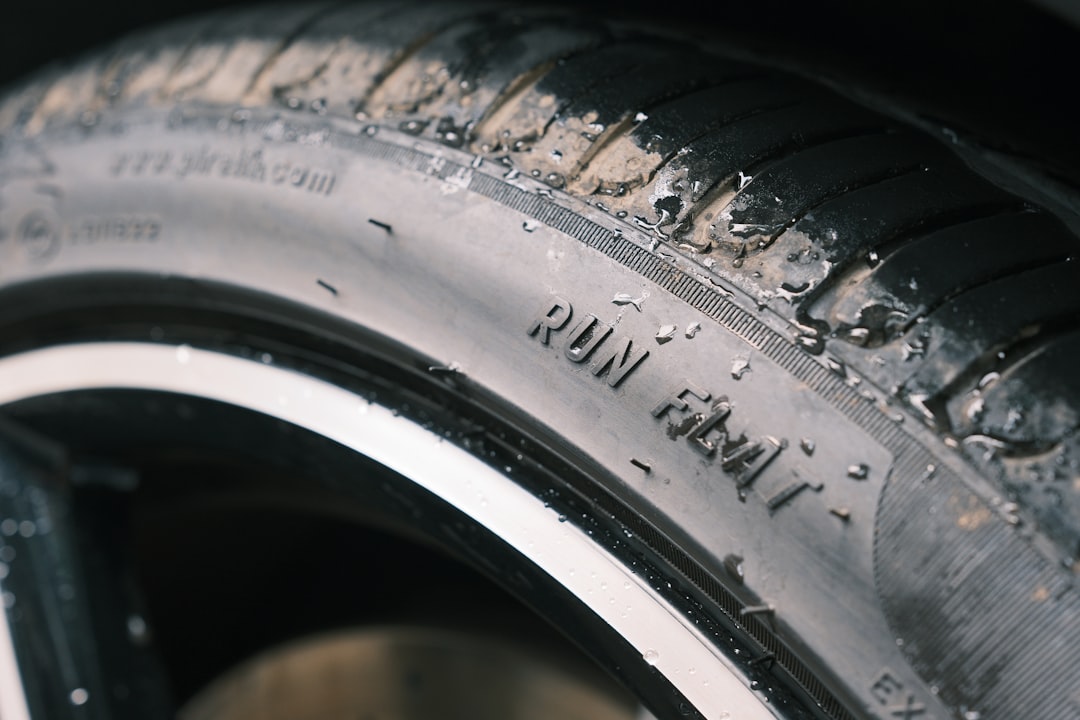

Engage prospects with a scan and streamline customer engagement with FREE QR code marketing tools by Sona – no strings attached!
Create a Free QR CodeFree consultation

No commitment

Engage prospects with a scan and streamline customer engagement with FREE QR code marketing tools by Sona – no strings attached!
Create a Free QR CodeFree consultation

No commitment
In today’s digitally driven landscape, tire repair services face increasing pressure to deliver seamless customer contact and booking experiences. Traditional methods such as relying on phone calls, walk-ins, or basic web forms often result in missed high-value prospects. These lost opportunities are typically caused by bottlenecks like untracked inquiries, missed follow-ups, and a lack of actionable data on prospects who interact but do not convert.
Customers now expect quick, intuitive access to reliable service, especially with busy schedules and time-sensitive tire emergencies. Providers who cannot keep pace risk losing business to more responsive competitors. QR codes have emerged as a powerful bridge between the physical and digital worlds for tire repair service providers who depend on fast and effective lead capture. Strategically placing codes across local advertising can further amplify visibility and response.
Harnessing QR code technology with the Sona QR platform enables tire repair shops to transform every customer touchpoint, whether roadside, in-shop, or through local advertising, into a conversion opportunity while also gaining deeper data-driven insights. This guide explores how QR codes can be strategically implemented to capture more meaningful leads, boost repeat business, and deliver measurable ROI, ensuring every interaction becomes an opportunity rather than a missed chance.

QR codes directly tackle the challenge of dropped or stalled communications, a common frustration for both service teams and customers. Missed calls, lost voicemails, and forgotten walk-in notes often result in missed business and erratic scheduling. QR codes bridge the gap between physical touchpoints and digital outcomes, enabling real-time, low-friction engagement that is easy for customers and efficient for staff. For broader context on adoption, see QR codes in marketing.
The key is to replace analog processes with scannable shortcuts that guide people to the next best action. Instead of hoping someone remembers a phone number from a van decal or keeps a paper brochure, a scan delivers instant access to booking, support, or helpful resources. The result is a smoother experience that reduces dependence on staff availability and captures intent while it is hot.
Here’s how:
By replacing analog workflows with integrated QR code processes, tire repair providers gain not only increased lead capture, but also granular visibility into each prospect’s journey. That visibility reduces missed high-value opportunities, improves scheduling predictability, and enhances both customer satisfaction and shop efficiency.

Tire repair shops often lose opportunities when high-intent prospects fail to complete contact forms or forget shop details after seeing a traditional ad. The loss is especially painful with anonymous traffic that never shows up in your CRM. QR codes provide an immediate, intuitive call to action that captures this demand when attention is at its peak and makes response effortless.
This matters most during emergencies and after-hours moments. A driver with a puncture does not want to navigate complex sites or wait on hold. A simple scan to book roadside assistance or request a callback within minutes can be the difference between winning the job and losing it to a competitor. QR codes lower the barrier to action and provide trackable signals that your team can act on.
When paired with a platform like Sona QR, these scans flow into a centralized view of performance. You can attribute results to specific assets, optimize in real time, and integrate data with CRM and ad platforms for smarter growth.
Customers discover and interact with tire repair services in a variety of ways. QR codes offer flexible formats that match those moments and remove friction. The format you choose should align with your objective, whether it is contact capture, quick booking, or encouraging a repeat visit.
Dynamic QR codes are particularly helpful in tire repair contexts where capacity and offers change frequently. Since links can be updated without reprinting, you can test different destinations, offer seasonal specials, or route to an after-hours page based on shop schedules.
With Sona QR, you can generate and manage these formats in one place, switch destinations as needed, and track how each format performs across different touchpoints and customer segments.

Many tire repair providers spend on print, vehicles, and mailers without knowing which assets truly drive business. QR codes turn every physical surface into a measurable channel, so you can invest where results are strongest and refine where performance lags.
Think in terms of contact density and intent. Places where people already need help or are already in your shop are prime opportunities. A scan on a mobile repair van at the scene of a flat will outperform a generic flyer. A code on an invoice that invites an easy follow-up appointment can produce highly profitable repeat visits.
Deploying QR codes across these touchpoints captures demand in the moment and builds data-enriched customer relationships. Over time, you will identify which surfaces and messages convert best, so you can scale winning tactics and retire underperforming ones.

QR codes shine when they make the path from awareness to action effortless. In tire repair, the most valuable use cases remove friction for urgent needs, streamline booking, and connect offline interactions with digital records for better follow-up.
Each use case below maps to a common customer interaction and a measurable business outcome. You can deploy all three together or start with one high-impact area, then expand as you see results.
Each of these use cases addresses a persistent pain point, such as anonymous traffic or unconverted inquiries. When the next step is one scan away, conversion improves and the data you collect fuels smarter marketing and operations.
Every QR scan is a signal that contains intent, context, and timing. By tagging codes and destinations appropriately, you can transform scans into behavior-based audience segments for retargeting and lifecycle marketing. This is how tire repair shops bring previously anonymous interactions into their CRM and advertising platforms. For paid media follow-up, see Sona’s Playbook on intent-driven retargeting.
Segmentation is most powerful when it reflects actual needs. Drivers seeking emergency help respond to rapid callbacks and transparent ETA updates. Drivers browsing maintenance tips respond to seasonal tire rotation reminders and loyalty offers. QR codes let you capture this nuance without friction.
With Sona QR, tagging and syncing happen automatically, so your lists stay fresh and your campaigns stay relevant. This turns every scan into fuel for remarketing, email nurture, and customer retention programs.
Most tire repair shops operate across multiple channels, from door hangers to social posts, yet struggle to attribute results or coordinate messaging. QR codes connect offline and online, enabling real-time engagement and a more complete view of performance across every channel you use.
The key is to craft a connected funnel. A flyer scan should lead to a landing page aligned with the message on that flyer. An in-shop poster scan should reflect the context of someone already on-site. When each channel links through a QR code, data flows into one system and optimization becomes continuous rather than occasional.
QR codes serve as the offline onramp to your digital engine. A centralized platform like Sona QR lets you manage all codes, monitor performance, and sync scan data with CRM and ad platforms so your marketing mix becomes coordinated and accountable.
The most successful QR campaigns start with a clear objective and follow a consistent process. Treat QR codes as part of a conversion system rather than a simple shortcut. When each step is intentional, you get clean data, better user experiences, and measurable growth.
Use the following steps to plan, launch, and optimize QR campaigns for tire repair services. Each step includes tactical guidance tailored to the realities of urgent service requests and high-volume maintenance needs.
A well-defined goal keeps your creative choices on track and your analytics meaningful. Decide exactly what action you want a scanner to take and why it matters to the business.
Your code type determines flexibility and trackability. Tire repair campaigns benefit from the ability to update destinations and analyze performance over time.
Design influences scan rates as much as placement. Make the code stand out, explain the value, and validate that it scans in real conditions.
Meet customers where they already are and when they are most likely to act. Prioritize placements that see urgent intent or predictable foot traffic.
Treat your QR rollout as a continuous experiment. Monitor performance, identify friction points, and iterate quickly to improve outcomes.
Advanced platforms like Sona QR can automate scan tracking, pass data to your CRM, and sync audiences to ad platforms. This minimizes the risk of outdated segmentation and ensures every campaign remains responsive.
Attribution is a perennial challenge in tire repair. You distribute door hangers, wrap your vans, and post yard signs, but struggle to prove what generates bookings. QR codes give you a way to connect offline engagement to online actions, all the way to revenue.
When every scan is tagged by source, time, and location, it becomes possible to see the full picture. You can identify which assets create high-intent leads, measure how quickly your team responds, and allocate budget toward the placements that produce the best outcomes.
With Sona QR and Sona.com, you can go further. Sona QR captures detailed scan data including time, device, and campaign source. Sona.com links QR scans to website visits, email engagement, and CRM activity, then attributes pipeline and revenue using identity resolution and multi-touch models. This makes QR codes a true part of your performance marketing stack rather than a stand-alone tactic. For measurement ideas across print and in-person channels, see Sona’s guide to offline attribution.
Sustained success with QR codes comes from consistent execution, tight attribution, and a habit of testing. Many underperforming campaigns share the same issues, such as undifferentiated codes, missing UTM parameters, and staff who do not actively promote scanning.
A few practical adjustments can unlock more value from your placements. Train staff to point out the benefits of scanning. Use automation to follow up immediately. Create unique codes for each asset so you can double down on what works and eliminate what does not.
By standardizing these practices and expanding to fresh placements, you create a flexible, measurable system that keeps generating value. Sona QR helps by unifying code creation, analytics, and integrations in one platform.

Tire repair businesses across markets are using QR codes to remove friction, capture urgent demand, and compound the value of every offline touchpoint. The most successful implementations pair smart placements with disciplined follow-up and a clear, benefit-led CTA.
The following examples show how different objectives can be met with targeted QR deployments. Use them as a starting point, then adapt the tactics to your market, capacity, and service mix.
These scenarios underscore a core principle: QR codes produce outsized results when they guide the next step, reduce friction, and feed data back into your systems. Creative placement combined with operational follow-through turns static marketing into a live acquisition and retention engine.
The difference between a high-performing QR program and a disappointing one often comes down to execution details. Visibility, context, and speed matter. So do mobile experiences that finish the job quickly. Avoid common missteps by designing with the real world in mind and validating in the field.
Treat every code like a miniature campaign: it needs a compelling value proposition, a strong landing experience, and a clear way to measure outcomes. When your QR system reliably moves people from interest to booking, the gains are repeatable and scalable.
QR codes have become a practical lever for tire repair shops that want to convert every physical interaction into growth. When deployed thoughtfully, they streamline urgent booking, support routine maintenance, and surface rich engagement data from previously anonymous interactions. Each scan becomes a signal you can act on: retarget with relevant offers, prioritize callbacks, and improve service quality through feedback loops.
By integrating QR codes across vehicles, in-shop assets, and printed collateral, tire repair providers position themselves to capture demand as it arises. The combination of better attribution, smarter audience building, and automated follow-up ensures your shop remains the go-to solution for local drivers. With a platform like Sona QR and the attribution capabilities of Sona.com, you can generate codes in minutes, track performance in detail, and connect scans to revenue so QR becomes a core driver of measurable growth and loyalty. Start creating QR codes for free.
QR codes have transformed the tire repair services industry from traditional, appointment-only models into seamless, measurable growth engines. Whether it’s acquiring new customers through easy contact and booking, enhancing customer convenience, or streamlining service scheduling, QR codes replace cumbersome phone calls and paperwork with instant, mobile-friendly actions that capture real-time engagement data to boost conversions.
Imagine customers scanning a code on your signage or flyers to instantly book a tire repair appointment, reducing no-shows and increasing repeat business. With Sona QR, you can create dynamic, trackable QR codes in seconds, update your campaigns without reprinting materials, and directly link every scan to revenue growth. No missed bookings, no lost leads—just smarter, more profitable customer interactions.
Start for free with Sona QR today and turn every scan into a confirmed appointment, loyal customer, or valuable referral.
Choose a tire repair service that offers quick, intuitive access through digital tools like QR codes for seamless booking and prompt response, ensuring reduced missed opportunities and better customer satisfaction.
Signs you need tire repair include punctures, tread wear, or urgent issues like flats, which can be addressed quickly by scanning QR codes on roadside signs or vehicle decals for immediate service.
Tire repair costs vary, but customers can use QR codes linked to pricing calculators or instant estimate tools to get real-time cost information directly from the tire repair provider.
Regular tire maintenance improves safety, extends tire life, and can be easily scheduled through QR codes linking to maintenance tips, booking forms, and service reminders that encourage repeat visits.
You can schedule a tire repair appointment quickly by scanning QR codes on van wraps, flyers, or in-shop signage that link directly to mobile-optimized booking forms available anytime, even after hours.
Use Sona QR's trackable codes to improve customer acquisition and engagement today.
Create Your FREE Trackable QR Code in SecondsJoin results-focused teams combining Sona Platform automation with advanced Google Ads strategies to scale lead generation

Connect your existing CRM

Free Account Enrichment

No setup fees
No commitment required

Free consultation

Get a custom Google Ads roadmap for your business






Launch campaigns that generate qualified leads in 30 days or less.
